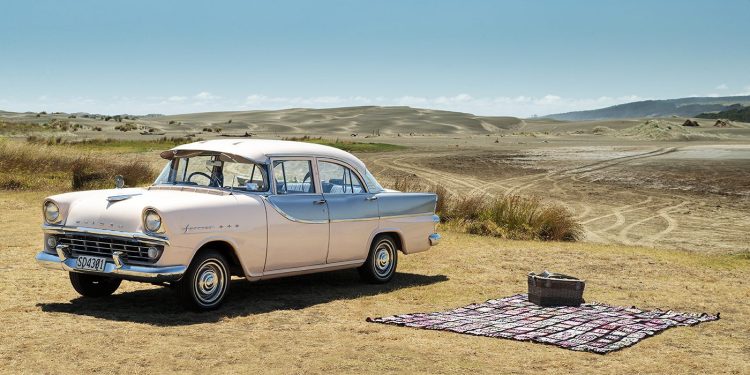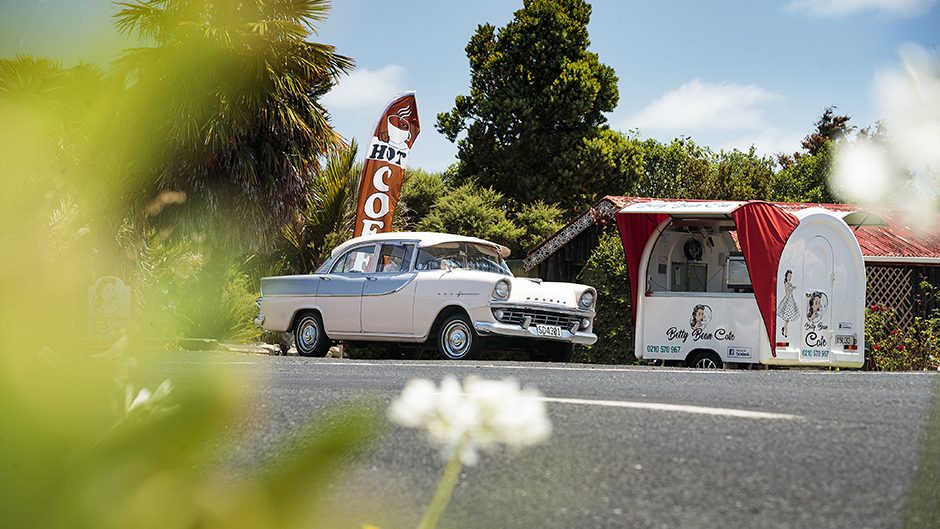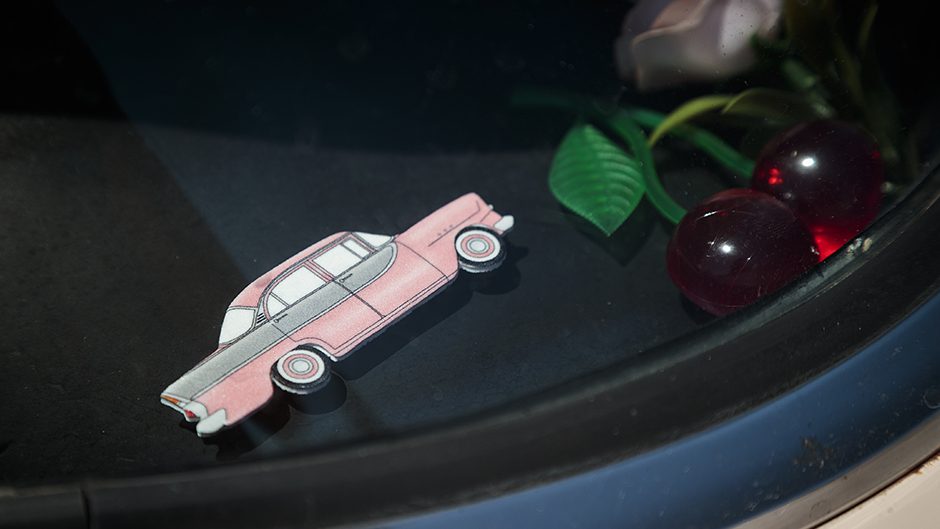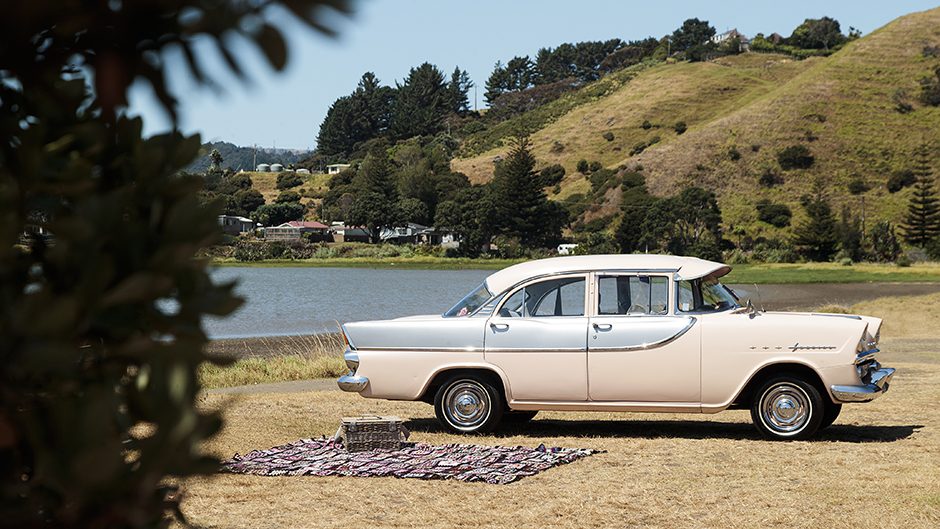1960 Holden FB
Words Paul Owen | Photos Tom Gasnier
When Holden released the FB range in 1960, its mechanicals dated back to the mid-1950s. Its styling even looked like a Chevy from that same era, which endears this Holden to its current owner.
You know that you’re getting old as a motor-noter when the classic car you’re writing about is one that you used to ride in as a kid 60 years ago. Such is the case for me with Liz Alexander’s 1960 FB Holden sedan.
Hers is the pink n’ grey version that my Mum always craved. However, I fully approved of my Dad’s insistence on the two-tone blue example that he bought as our new family car six decades ago.
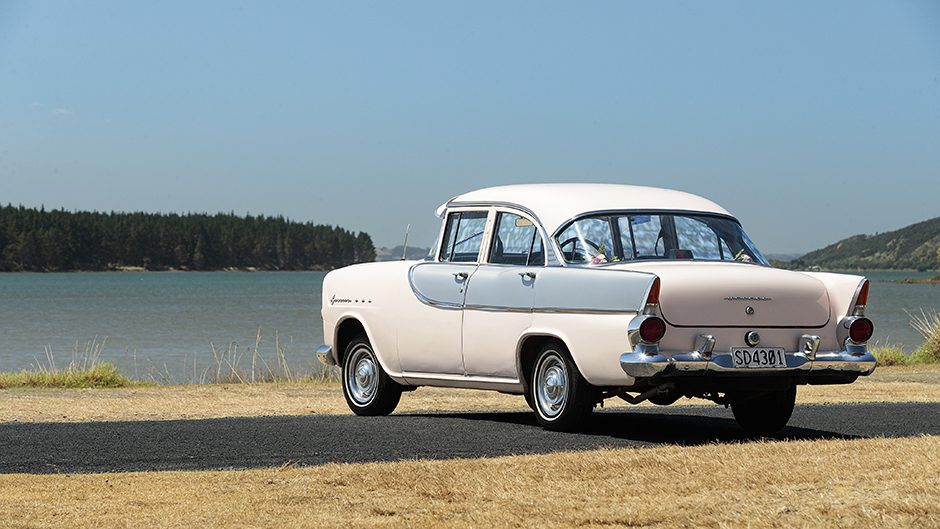
This led to a game that my family used to play on our Sunday afternoon drives which turned into a friendly battle of the sexes. Dad and I would team up against Mum and my sister to see how many FB Holdens we could spot that were either ‘skies’ (two-tone blue like ours) or ‘salmons’ (scallop beige with morning mist like Liz’s). We’d rack up the scores for each colour scheme, and it may surprise you to learn that the ‘salmons’ often proved the most common.
Liz attributes the scallop/mist colour combo as being the major factor in her being able to buy the car two years ago. She had been on the lookout for a classic Holden for some time, and spotted an ad on Trade Me for an FB located in Palmerston North.
“I stalked the car for about a month, and it didn’t sell because all the men who went to buy it would see the colour scheme and walk away.
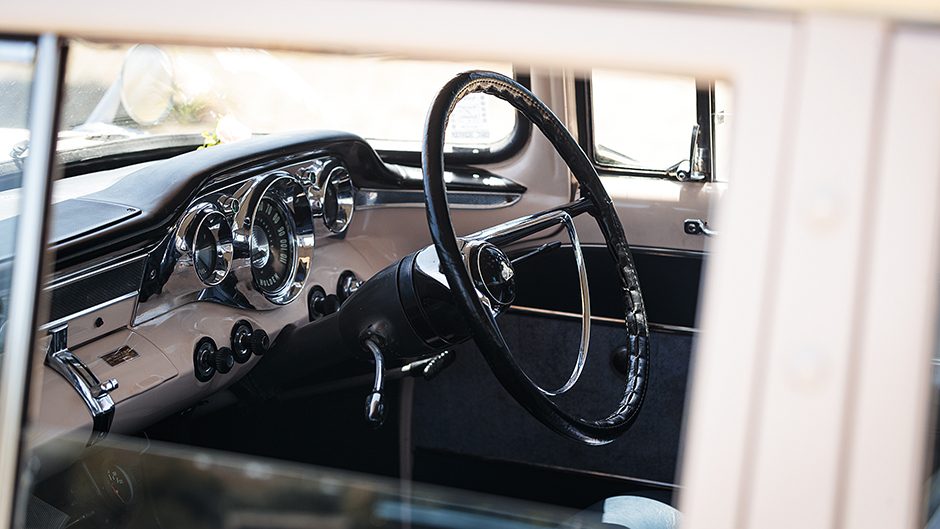
“It’s a totally different story for a woman – I think the two colours are absolutely gorgeous, and work really well together.”
Liz bought the FB for $16,000 and trailered it back to her home in Port Waikato. It wasn’t her first choice of a classic car, but she soon gave it a name – Sylvie – and her love for it began to grow.
“I had always wanted a 1957 Chevrolet Bel Air, but could never afford one. So I started looking around for what I thought was the next best thing: an FB Holden that looks like ’57 Chev in miniature.
“It had to be an FB rather than a EK (the toned-down facelift that Holden released just 16 months after the debut of the FB).
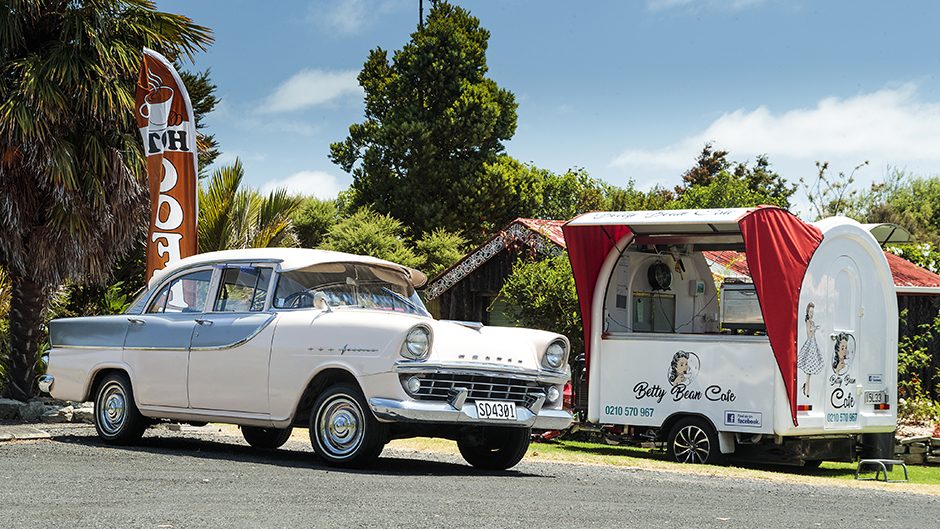
“It had to have the FB’s flash on the side, and the extra chrome around the windscreen – they were two things that connected the Holden visually to the Chevy.
“I now think that I got the better deal (than the classic American alternative). The Holden isn’t just cheaper to buy, it’s also cheaper to own.
“And people really respond to it. It’s a slice of real Kiwiana rather than a dream car.”
There was another Holden pulling at Liz’s modest classic car budget at the time she bought ‘Sylvie’.
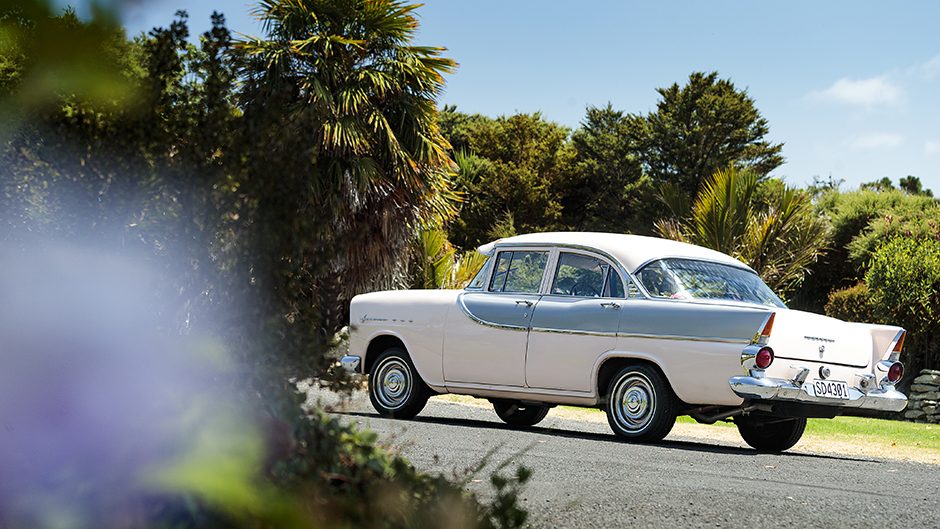
“ I could have bought a ‘Golden Holden’ – an HQ Kingswood sedan – and had the choice of which of these two cars that I’d go to see first. ‘Sylvie’ won that battle and I’m so glad that she did. She really makes my heart sing.”
‘Sylvie’ also fits right in Liz’s affection for 1960s style. She operates a mobile coffee bar in Port Waikato called Betty Bean café, with her own business graphic that she created using a 1960s-period dress pattern as inspiration. When Liz opens up the coffee caravan, she’s always wearing a dress that could have been worn by Annette Funicello in some Disney family movie from the 1960s.
Liz has added plenty of little touches to the Holden that illustrate the fun that she’s having with it. There’s the crochet blanket and period picnic hamper residing on the back seat, and the kitschy plastic flowers decorating the parcel shelf. This is classic car ownership enhanced by a woman’s flair for fashion and style.
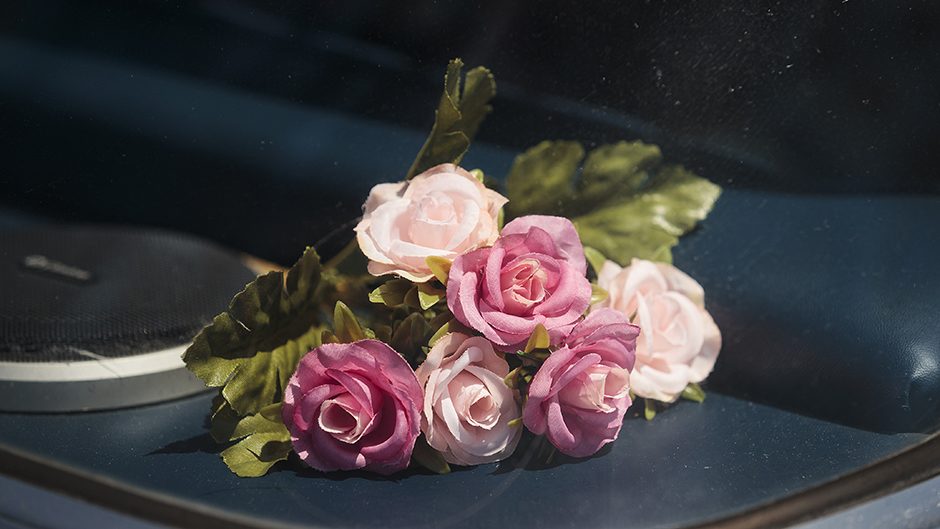
It soon became apparent to Liz that the salty air of her beachside village at the mouth of the Waikato River was hurting the Holden.
“The doors need a re-skin, and they really started to deteriorate once I moved the car to Port Waikato.”
She now garages ‘Sylvie’ some 20km further inland at Pokeno. Meanwhile, Liz’s other classic Holden – an HZ Kingswood wagon named ‘Stella’ – is up for sale to free up the funds required to refurbish the FB.
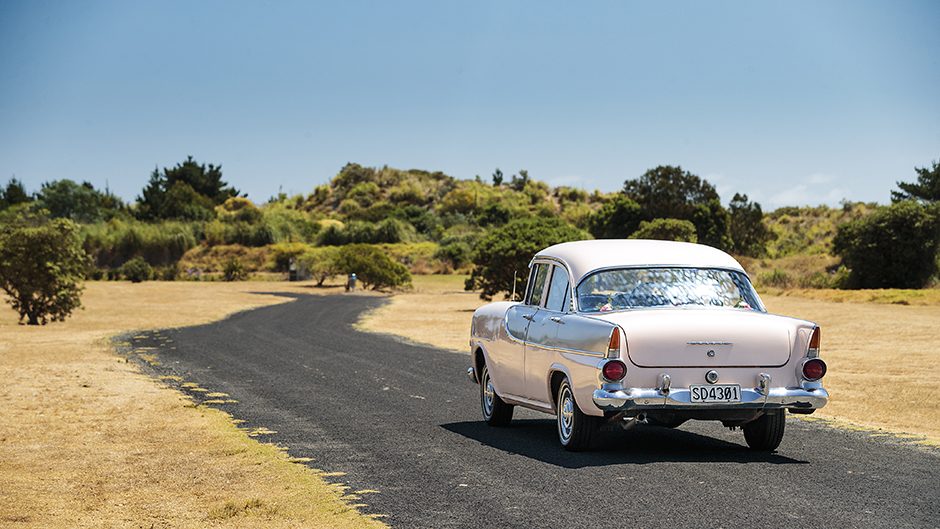
Liz says that most of her contact with other FB/EK Holden owners is through a Facebook page that has a lot of Aussie members but few located in New Zealand. She scours swap meets, and snaps up all the FB and EK parts that she can find. Currently her stock includes a spare grille, new over-riders, and the seized engine that Holden originally installed in the car (the previous owner had swapped in a fully reconditioned example of Holden’s modest 138-cubic inch inline six).
The continued use of a small-capacity six by Holden for the FB highlights that the car didn’t have much in the way of competition when it was released, as Australian manufacturing of the Ford Falcon and Chrysler Valiant rivals was still in the planning stages. As John Wright points out in his book, Heart of the Lion:
“It (the FB) was a case of putting fashion before function, a failing that had never afflicted previous Holdens. Where earlier models had combined elements of United States design in a more muted Australian style, the FB looked like a smaller American car of four seasons before; by trying so hard to look fashionable, the unfortunate effect was the reverse. Behind the new image there had been little technological progress. Most of the money spent in developing the new model had been directed towards the cosmetics.”
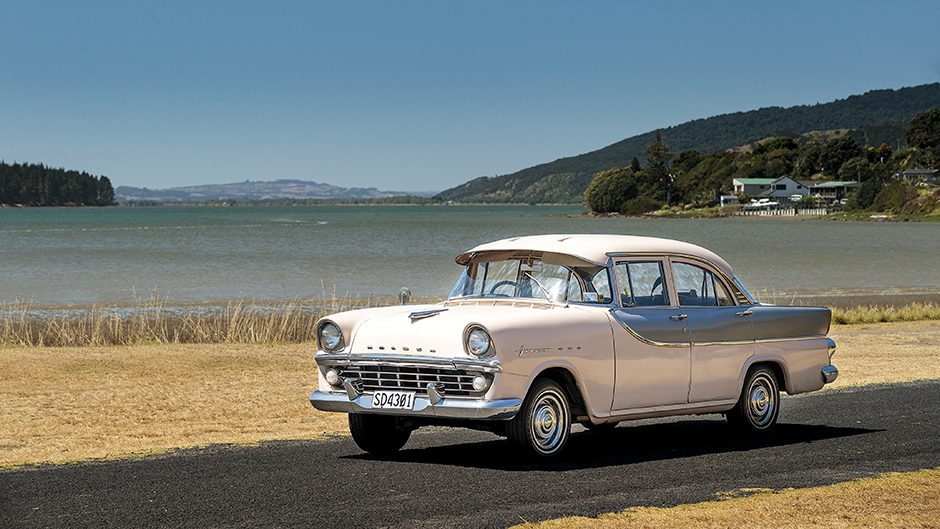
Several of the body parts – doors, bootlid etc. – had been carried over from the FC, although the Holden engineers did cleverly manage to make the boot look novel by mounting it at a different angle. While Wright obviously doesn’t like the glitz of the FB, which resulted in the FJ-sourced powertrain (a slightly expanded 75bhp inline six driving the rears via a column-shift three-speed manual) having to lug quite a few extra kilograms around, romantics such as Liz consider it to be one of the best-looking Holdens.
Sometimes brightwork was placed on a car because it made financial sense to do so. Case in point: the chroming of the FB’s taillight bezels continues all the way down behind the rear bumper because it was cheaper to fully plate those parts than to partially chrome them. Yet such frivolity was seen as excessive by an immature Australian motoring press, who appeared to wish that the early cars of the nation exuded some kind of rough n’ tough image worthy only of sustained use in the fly-blown wastelands of the Outback.
The FB, with an extra five horsepower over the FC it replaced, did allow the performance status quo to be maintained once the motoring magazines fully tested the acceleration and top speed of the 1960 Holden. However, the car used approximately 20 per cent more fuel, courtesy of its extra length and weight. And there were plenty of opportunities for improvement: there was no auto available, and the windscreen wipers used the vaccum drive of a 1930s GM vehicle, which meant that the wipers operated at a demented speed when the engine was idling, then slowed to become virtually useless once the throttle was opened.
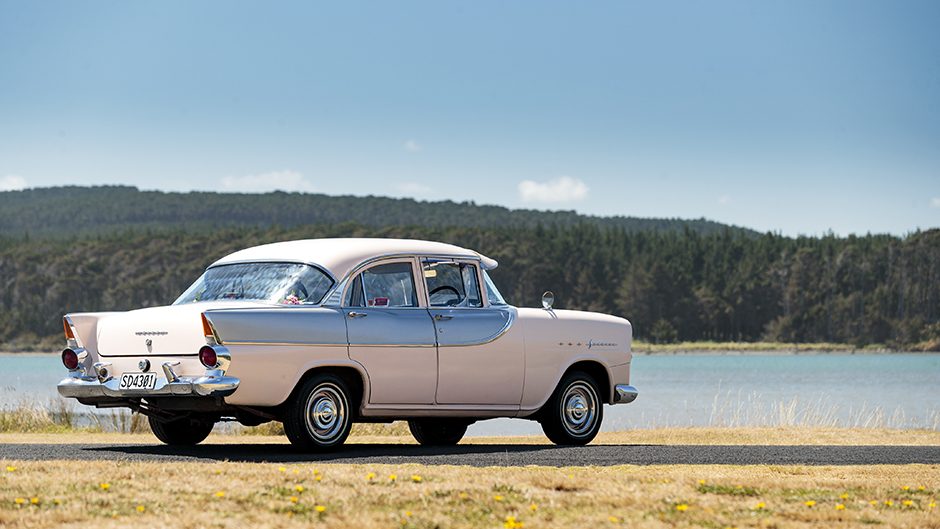
Electric motor operation of the wipers would be introduced during the FB’s production cycle, but too late for Liz’s car, which arrived on the docks in Dunedin early in 1960.
As Wright points out, the arrival of the FB heralded a huge increase in the revenues of GM-Holden. Almost as many FBs were sold during the model’s short 16-month production run than the FC had accrued in the previous three years.
“The fact is that heading into the 1960s, the FB still had the measure of the market despite its compromises. Simply, it was as good as it needed to be with no more money ‘tipped into it’ than was necessary,” noted Wright.
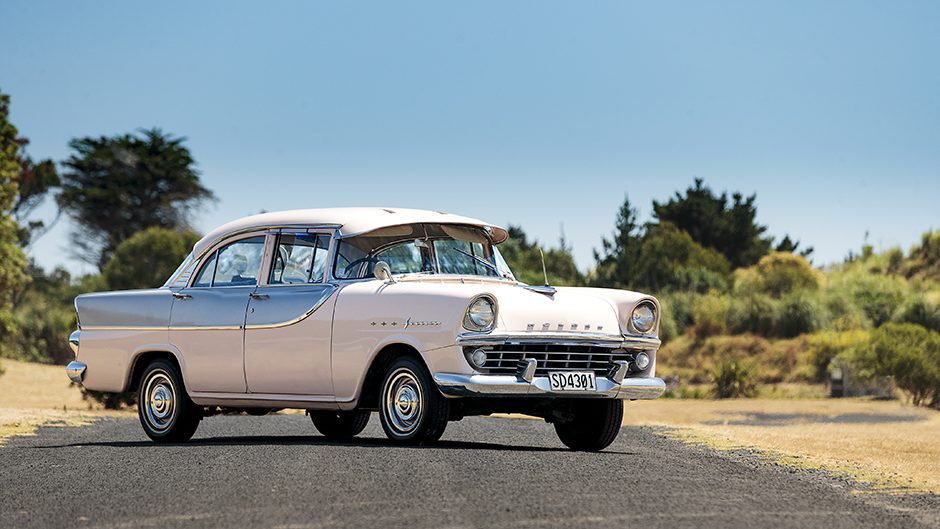
It’s this simplicity that is immediately apparent when Liz kindly offers me a drive of her beloved ‘Sylvie’. Who needs an automatic gearbox, when the three-on-the-tree shifts so accurately and smoothly, and the clutch disengages with such sweet precision? Electric wipers? No such need on a day such as this with ‘Sylvie’ pointed towards a beachside picnic-themed photo shoot. Excessive use of fuel? Not when compared with the ’57 Chev that was Liz’s first choice. More power? The 138 gives plenty of torque, allowing easy take-offs in first, multiple roles for second, and stress-releasing cruising in third. And man, this reconned engine is smooth.
Meanwhile, tastes in cars have changed since Wright wrote his ultra-serious look at the first 50 years of Holden. Many testosterone-charged hot-rodders are now painting their street machines pink, and male sports teams now proudly wear the colour. Liz was right to buy ‘Sylvie’ when she did, because I suspect that the prospective male buyers who walked away two years ago wouldn’t be so blind to the appeal of the colour scheme today. Perhaps Mum was right after all (as usual).


